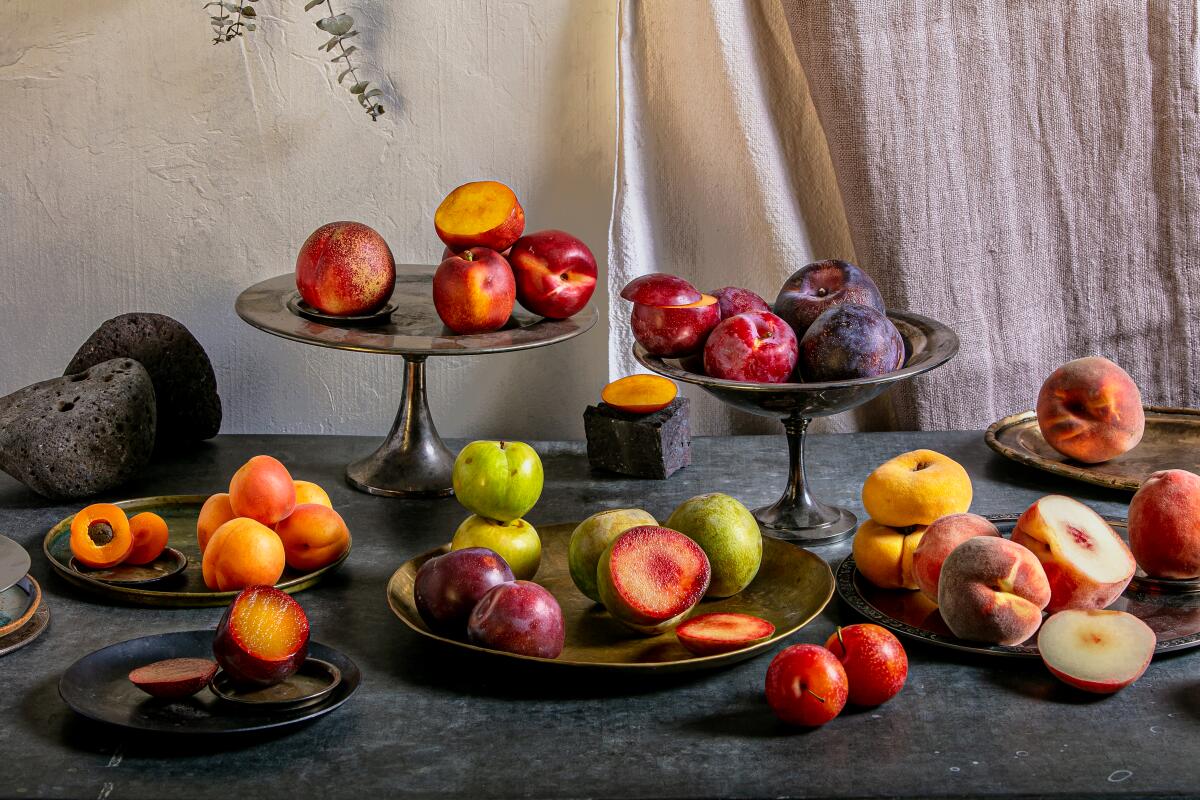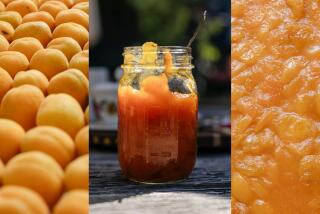Picking fruit at the market for making jam

This story is a component of the feature “Seasons of Preserves: Stone Fruit,” which is part of a four-part series on preserving fruit at home called “L.A. in a Jar.”
When it comes to picking fruit for your jam, select what’s available, what’s fresh and what’s within your spending power. Those expensive, pristine plums might seem like the best thing for jam, but they’re probably best enjoyed as is — raw. If you’re shopping at a farmers market, ask for what David Karp and Alessandra Hisako Gordon call the seconds, slightly bruised or imperfect fruit that is just as delicious as the expensive beauties but typically costs half as much.
As Karp and Gordon suggest, the best thing you can do is talk with the farmer or seller at the stand. Find the fruit that looks great to you and then ask what variety it is, what qualities it has (is it firm and tart, or soft and sweet when ripe?) and whether you can have a taste. You should then buy the best-tasting fruit; however great it tastes raw, it’ll taste even better when cooked into jam.
If you’re shopping at the grocery store — many have great selections of amazing stone fruit — you won’t be able to bargain for cheaper fruit. In that case, simply pick what’s the most ripe. But never be afraid to ask the clerks in the produce section for help. They might not be able to help you, but then again, they might be fruit savants who will point out the best specimens. It never hurts to ask.
Wherever you buy it, stone fruit comes in five broad categories (scientifically speaking, from the genus Prunus), pictured above clockwise, starting from the top left:
- Nectarines (from left: Diamond Pearl white nectarines from Olson Family Farms; mango-flavored nectarines from Ken’s Top Notch Produce)
- Plums (from left: Santa Rosa plums from Fruit Fairy Farms; Ebony Rose plums from K&K Ranch)
- Peaches (from left: Peach Pie yellow doughnut peaches from Galpin Farms; Klondike white peaches from Murray Family Farms; Sierra Rich yellow peaches from Olson Family Farms)
- Hybrids (from left: King Kat peacotums from Arnett Farms; Emerald green pluots from Ken’s Top Notch Produce; Flavor Supreme pluots from Tenerelli Orchards; cherriums [sometimes spelled “cherrums”] from Galpin Farms [on surface])
- Apricots (Golden Sweet apricots from Olson Family Farms)
Each family of fruit defies general categorization because of the range of flavors and textures. When ripe, some stone fruit is candy-sweet and soft, while others can be lemon-tart and crisp. The best way to figure out which variety you like best for your jam is to taste and smell each type you see, then focus on the one you like best.
More to Read
Eat your way across L.A.
Get our weekly Tasting Notes newsletter for reviews, news and more.
You may occasionally receive promotional content from the Los Angeles Times.











